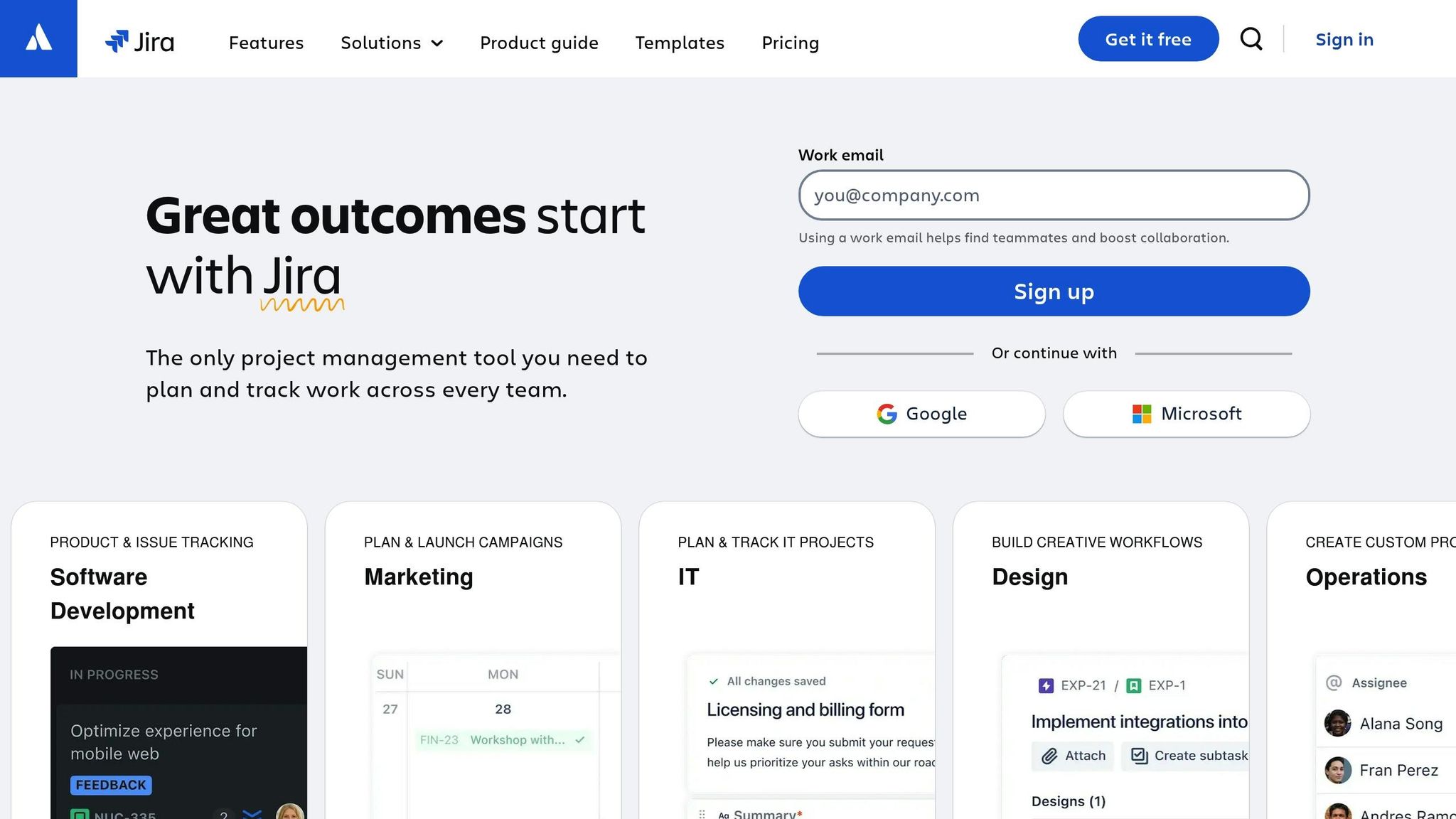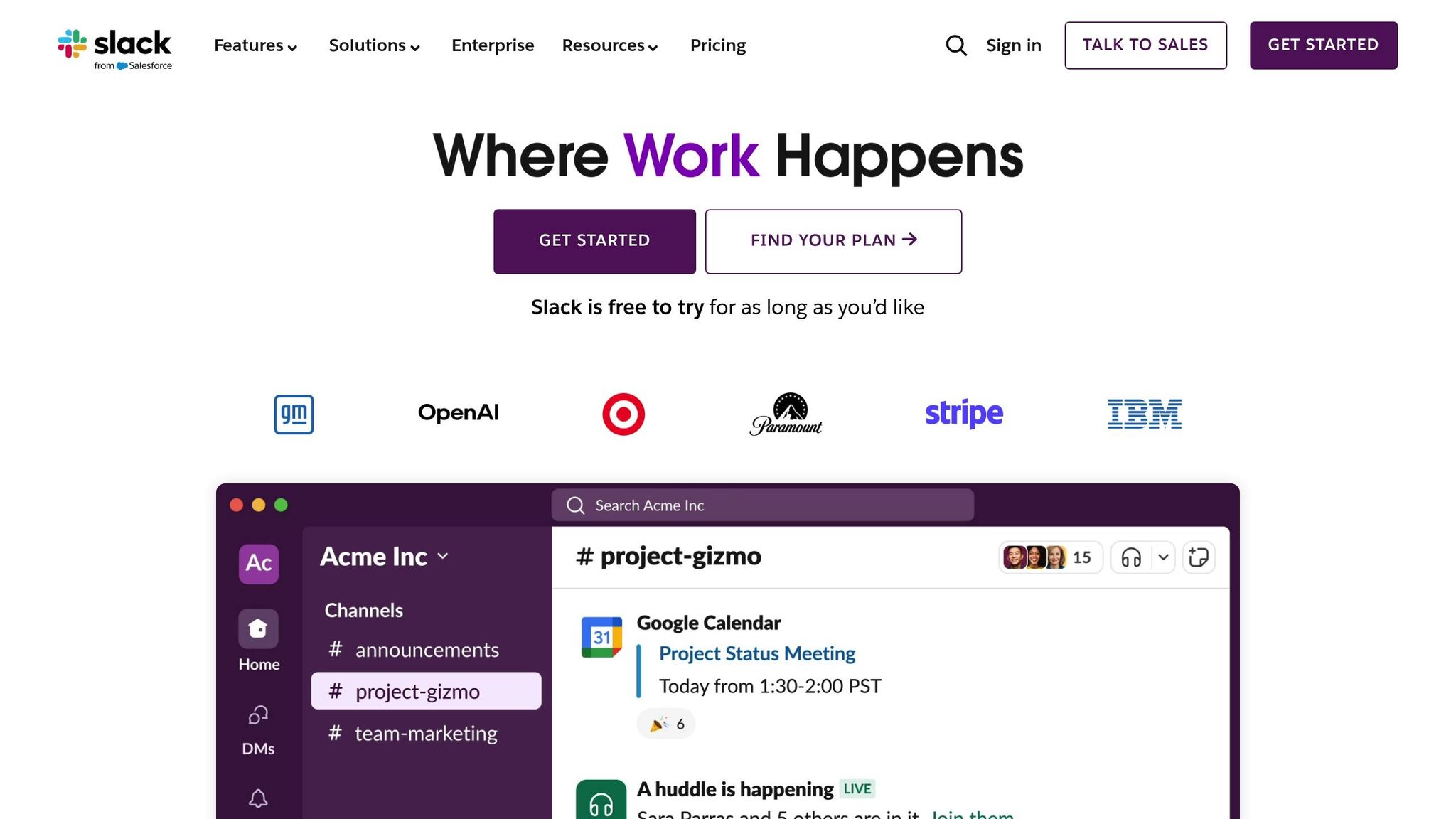Agile is a software development methodology that helps businesses quickly adapt to change, improve efficiency, and minimize risk. In Vietnam, 70% of software companies have adopted Agile, achieving project success rates twice as high as traditional Waterfall methods.
Key Benefits of Agile:
- Accelerated delivery: Breaks projects into short cycles (sprints), enabling faster feedback and adjustments.
- Improved product quality: Continuous testing and refinement.
- Increased employee satisfaction: For example, FPT Software reported a 25% boost in satisfaction just three months after implementing Kanban.
- Reduced costs and risk: Problems are detected and addressed early.
Popular Frameworks:
- Scrum: Suited for projects with clear goals, focusing on short, time-boxed sprints.
- Kanban: Visual workflow management, ideal for small teams or continuous work streams.
- Lean & XP: Emphasizes process optimization and code quality.
| Framework | Best For | Strengths | Limitations |
|---|---|---|---|
| Scrum | Teams with stable goals | Clear structure, continuous improvement | Can be rigid |
| Kanban | Flexible teams | Visualizes work | Lacks fixed deadlines |
| Lean/XP | Quality-focused teams | Eliminates waste, high-quality code | Requires advanced skillsets |
Supporting Tools:
- Jira: For complex projects; plans start at 186,000 VND/user/month.
- Trello: Ideal for small teams; plans start at 148,000 VND/user/month.
- Asana: Mid–level complexity; easy to use; plans start at 210,000 VND/user/month.
- Slack/Microsoft Teams: Enhances team communication.
Getting Started with Agile:
- Assess readiness of your organization.
- Run pilot projects to validate effectiveness.
- Build an Agile culture with cross-functional teams.
Agile is more than a methodology; it’s a mindset that enables Vietnamese businesses to adapt swiftly to digital transformation and deliver real customer value.
Overview of Agile Project Management
Core Principles of Agile
To understand why Agile excels in enterprise application development, it’s crucial to grasp its foundational principles. These elements have proven their value across numerous real-world projects.
Iterative Development for Continuous Improvement
Iterative development is the “heart” of Agile. It allows organizations to adapt to change and continuously enhance the product. Rather than following a linear Waterfall approach, Agile splits the project into short cycles, simplifying management.
Benefits for Vietnamese businesses include:
- Reduced risk and cost: Early detection and resolution of issues, avoiding expensive rework or delays[3].
- Faster time-to-market: Frequent small releases gather rapid feedback and allow timely adjustments to meet user needs[3][4].
- Enhanced transparency: Short cycle breakdown gives stakeholders clear visibility into progress[4][5].
Customer Collaboration as a Cornerstone
A core Agile principle is placing the customer at the center of development. Rather than relying solely on contract terms, Agile encourages active customer involvement to ensure the final product meets their needs and expectations[7].
Benefits include:
- Effortless change management: Early customer input lets teams make necessary adjustments without excessive overhead[6].
- Trust building: Regular interaction fosters trust between development teams and customers[6].
- Valuable feedback: Customer insights highlight strengths and gaps throughout development[6].
Vietnamese companies should establish a culture where each developer collaborates closely with customers via a dedicated account manager[6].
Rapid Response to Change
In a constantly evolving market, rapid response is crucial. Agile enables teams to adjust based on customer feedback and emerging trends. Short development cycles allow early detection and resolution of issues, reducing risk and ensuring timely releases[9][8]. This mindset fosters continuous learning and experimentation, helping organizations stay current with technology and maintain a competitive edge.
Agile Frameworks & Practices for Enterprise App Development
After mastering Agile principles, selecting the right framework is key to project success. Each framework offers distinct advantages for different project types and environments. Here’s how they optimize enterprise app development workflows.
Scrum: Structured, Iterative Development
According to the State of Agile 2022 report, 87% of Agile organizations choose Scrum[15]. It’s highly effective for mobile app projects thanks to its flexibility and continuous updates[11].
Scrum roles include Product Owner, Scrum Master, and Development Team. Work is done in 1–4 week sprints with planning, daily stand-ups, sprint reviews, and backlog refinement[10].
For example, Bamboo Airways’ task management system project by Synodus leveraged Microsoft Power Platform with Scrum, resulting in a 25% increase in task completion and a 30% reduction in manual effort within three months[13].
“Agile development allowed us to grow the product the way we wanted…avoiding wrong paths.” – Mr. Amaya, Product Owner, KDDI Corporation[12]
Key Scrum practices include clear user stories, backlog prioritization, daily stand-ups, sprint reviews, retrospectives, and automated testing to ensure quality[11].
Kanban: Visual Workflow Management
Kanban is favored by 56% of Agile teams[15]. Unlike Scrum, it manages continuous workflows rather than fixed sprints[14]. Visualization via Kanban boards reveals bottlenecks, and WIP limits ensure tasks are completed before new work begins[14]. Ideal for support or maintenance teams, though lack of deadlines may reduce discipline if not managed properly[14].
Lean & Extreme Programming (XP)
Lean focuses on waste elimination, while XP emphasizes code quality through pair programming and test-driven development[14]. Lean suits large enterprises improving workflows, and XP is ideal for teams prioritizing high-quality, frequent mobile app releases.
Popular Agile Tools: Jira, Trello, Asana

Jira is the top choice for 75% of Fortune 500 companies[22]. It’s built for complex engineering projects, with customizable workflows and in-depth reporting—perfect for large teams (50+ developers). Pricing ranges from free up to 335,000 VND/user/month[20][21].
“TECHVIFY Software delivered a scalable, customizable product in 14 weeks…their Agile approach was key to innovative solutions.” – Daniel Le, Director of IT Architecture & Engineering, DZH International[17]
Trello shines for small teams (5–10 people) with its visual, user-friendly Kanban boards[20]. Plans start at 148,000 VND/user/month[21].
Asana bridges complexity and simplicity, offering more features than Trello but less than Jira. With pricing from 210,000 VND/user/month, Asana suits non-technical teams with its intuitive interface[18][21].
Communication Tools: Slack & Microsoft Teams

Effective communication can boost productivity by up to 23% according to Automattic[24]. The two leading tools are Microsoft Teams—with 270 million users and deep Microsoft 365 integration—and Slack, prized for its high customizability and 2,000+ app integrations[23]. Tools like Loom and Miro further enhance clarity when text-based communication falls short[24].
Agile Tool Comparison Table
| Tool | Best For | Price (VND/user/mo.) | Strengths | Limitations |
|---|---|---|---|---|
| Jira | Large engineering teams (50+) | 186,000–335,000 | Highly customizable; detailed reporting | Complex interface |
| Trello | Small teams (5–10) | 148,000–309,000 | Simple, intuitive | Limited reporting |
| Asana | Mid-size teams (10–30) | 210,000–475,000 | Balance of features and simplicity | Less customizable than Jira |
| MS Teams | Microsoft 365 users | Free with 365 | Deep MS integration | Less flexible |
| Slack | Startups, dev teams | Starts free | 2,000+ integrations; highly flexible | Costly at scale |
According to research, organizations using structured project management waste up to 28 times less than those without clear standards[19].
Steps to Implement Agile in Vietnamese Enterprises
Adopting Agile in Vietnamese companies requires careful preparation and strategy. By 2021, 65% of software firms in Vietnam had adopted some form of Agile, though not all achieved desired outcomes[2]. Here are concrete steps to increase your success chances:
Assess Readiness & Set Objectives
Before starting, conduct a comprehensive evaluation of your digital transformation readiness. A survey of 352 Vietnamese enterprises highlights two focus areas: digitization capability and change management maturity[25].
- Digitization capability: Measured by technology integration, cybersecurity standards, and audit frequency.
- Change management maturity: Focused on leadership, decision-making, and accountability mechanisms.
A 2023 Ministry of Planning and Investment survey rated readiness at an average 3.3/5, with notable improvements in risk management and cybersecurity[26].
“Digital transformation is about using digital tech to drive strategic shifts in organizations, adjusting value creation while managing structural challenges.” – Vial[25]
Evaluate seven core domains: strategy, customer experience, supply chain, IT & data, risk & security, finance, and people & organization. Use the “Four Levels of Digital Mastery” to benchmark progress from beginner to digital master[25].
Build Agile Teams & Culture
Agile success hinges on organizational mindset and behaviors. A sustainable Agile culture rests on eight pillars: growth mindset, collaboration, cross-functional teams, incremental work, hypothesis-driven experimentation, customer focus, continuous improvement, and respect[28].
To foster effective teams:
- Empower teams to plan and decide independently.
- Ensure transparency by linking planning with execution.
- Visualize workflows to identify and resolve bottlenecks.
- Limit work-in-progress to reduce waste and accelerate delivery[27].
Continuous Improvement & Overcoming Challenges
A major hurdle in Vietnam is traditional hierarchical culture, which clashes with Agile’s egalitarian, flexible ethos[2]. Projects using Agile without local adaptation see a 43% higher failure rate, whereas those tailored locally meet goals 65% more often[30].
To succeed:
- Run pilots in a small scope to validate and adapt Agile practices.
- Embed Agile** in core processes—HR, procurement, IT—to ensure organization-wide alignment[29].
Conclusion
Key Takeaways
Agile has proven its value in Vietnamese enterprise app development, with 65% of local software firms adopting it[2]. Data shows Agile projects deliver faster and significantly boost employee satisfaction.
The three pillars of Agile success are flexibility, collaboration, and continuous improvement. Flexibility lets teams adapt swiftly; collaboration ensures transparent communication; and continuous improvement lifts product quality[31].
Gartner reports that 87% of global organizations have leveraged Agile for some aspect of application development[1]. This underscores the trend toward Agile to meet ever-changing customer demands.
“Agile assumes change is constant, and corrections offer competitive advantage.” – SGS Vietnam[1]
Call to Action for Vietnamese Businesses
With proven benefits, now is the time to act. Agile projects succeed at twice the rate of Waterfall initiatives[1]. Delay means missed opportunities.
Begin by assessing your digital readiness. As Guillaume Pahud of SGS noted, “Agile at Scale” enabled the successful digitalization of supply chain quality management[1].
Start small with low-complexity pilots before scaling. Invest in Agile training and tools like Jira or Asana to build a solid foundation[2].
For deeper support, Xenia Tech stands ready to partner. With expertise in strategy consulting, custom enterprise software, and AI-driven analytics, Xenia Tech Solutions can help you implement Agile principles and tools effectively.
Agile is not just a development methodology—it’s a value-creation mindset in the digital age. Early adopters will seize the competitive edge in Vietnam’s accelerating digital transformation.
FAQs
What should businesses evaluate before adopting Agile?
Effective Agile adoption requires key readiness assessments:
- Process analysis: Review current workflows to identify weaknesses and improvement opportunities, including team collaboration and delivery timelines.
- Culture check: Ensure organizational culture aligns with Agile values—flexibility, collaboration, and rapid feedback—with leadership buy-in.
- Resources & tools: Assess existing personnel skills and collaboration tools, which form the backbone of Agile success.
How do Scrum, Kanban, and Lean differ, and how to choose the right framework?
Scrum is ideal for projects needing detailed planning and tight team coordination via time-boxed sprints.
Kanban works best for continuous workflows and visual task management.
Lean focuses on process optimization and waste reduction for end-to-end operational improvements.
Choose based on your project’s need for structure (Scrum), flexibility (Kanban), or process efficiency (Lean).
What challenges arise when adopting Agile in Vietnam, and how can they be overcome?
Common challenges include:
- Communication barriers: Address language and cultural gaps with training and collaboration tools like Slack, Teams, or Zoom.
- Skill shortages: Invest in internal training or partner with reputable local/international tech organizations.
- Infrastructure & security: Upgrade networks, implement advanced cybersecurity measures, and comply with international standards to protect data and ensure stability.




